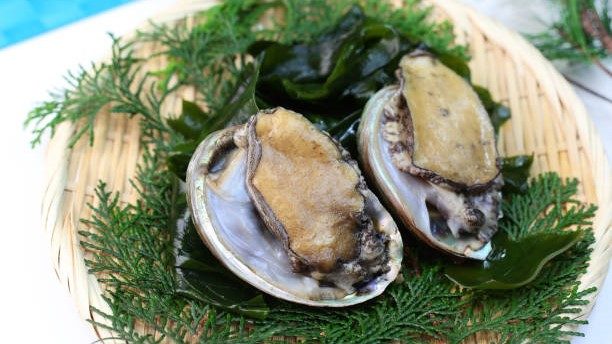Chinese New Year, or the Lunar New Year, is a time of celebration with your loved ones. It is time for red packets (angpow)! It is time to finally unpack those festive treats! And it is a time to share your blessings with your family and friends. The festival officially celebrates the beginning of a new year on the traditional Chinese calendar. But let’s dive deeper and explore the cultural significance of this prosperous holiday.
In this article, we will be ‘diving deep’ into one of the must-have foods that are frequently present on most Chinese New Year dinner tables – ABALONE.
Abalone or 鲍鱼 (bao yu) in Chinese brings the meaning ‘to carry surplus’. In Chinese folklore, it is believed that water and wealth go hand-in-hand, which is why seafood is considered an extravagant dish during the festival and is served during gatherings.
What is abalone?
Abalone is a common name used to describe sea snails of varying sizes from small to large. These marine gastropod molluscs are under the Haliotidae family. Unsurprisingly, abalone is not only a delicacy to us Chinese but in other parts of the world as well, which includes the UK, Australia, New Zealand and South Africa.
The shells have a low, open spiral structure with several open respiratory pores. In the thick inner layer of the shell are composed of nacre, or named as the mother of pearl, which is a highly iridescent component that makes the pearls. The iridescence makes the shells valuable, and it is used as attractive decorations and jewellery. Meanwhile, the flesh can be consumed raw or cooked as in accordance with various cultures.
The Nutritious Values of Abalone
Abalone is thought to bring wealth and abundance when savoured during the new year. Although it may be an expensive ingredient, did you know that they are also rich in nutrition?
- The flesh contains high in omega-3 fatty acids which gives anti-inflammatory properties which are essential in cardiovascular health and arthritis. 100g of abalone has the same amount of omega-3 fatty acids as with 700g of chicken breasts.
- It is also rich in iodine which is pivotal to the functioning of the thyroid gland for healthy body development.
- Abalone is also a good source of phospholipids (phosphorus), important for the regulation of cells.
- Abalone is high in proteins (amino acids) which are the building blocks of life.
- It is also a rich source of vitamins and minerals.
The world’s most expensive seafood?
Probably, it is one of the most highly-priced seafood in the market globally. Wild abalone can cost up to 500USD per kilo. The shell of the abalone that takes up most of the weight, so a kilogram of abalone could mean approximately only 250g of abalone flesh.
Only harvested by hand
Unlike fish and prawns, abalone scavengers the seabed and cannot be caught by net. With its hard and heavy shell, a skilled diver has to dive into deep waters to harvest the priced shell by hand.
Diving is a risky job
During the harvesting process, unforeseen circumstances could endanger a divers’ life.
Rough currents, jagged rocks on the seafloor, or predators are some of the risks that come with the job.
Limited quantities of abalone exist
Abalones can only grow in cold, coastal waters. They thrive in the waters of Japan, New Zealand, Australia and western coasts of North America. With global warming at large, this brings a threat to their survival.
Due to the circumstances, prices are drastically different during different times of the year. Of course, one can obtain the farmed abalone which costs much lesser than wild-harvested abalones.
Some species are endangered
The white and black abalones are critically endangered due to overfishing on large scales. Thus, these species are banned from being harvested. The pink, green and pinto species are under conservation programmes, so it is unsurprising that there are quotas of harvesting these species.
Some parts of Australia are starting to implement new guidelines to limit the fishing of abalone. With more species of the list, the prices are bound to shoot up.
Food for thought: Abalone may still be precious and highly sought after, but is it time to change to some alternative seafood?
Discover where to have delicious abalone using the Foodpanda app. Just a few clicks and food will be right at your doorstep!
